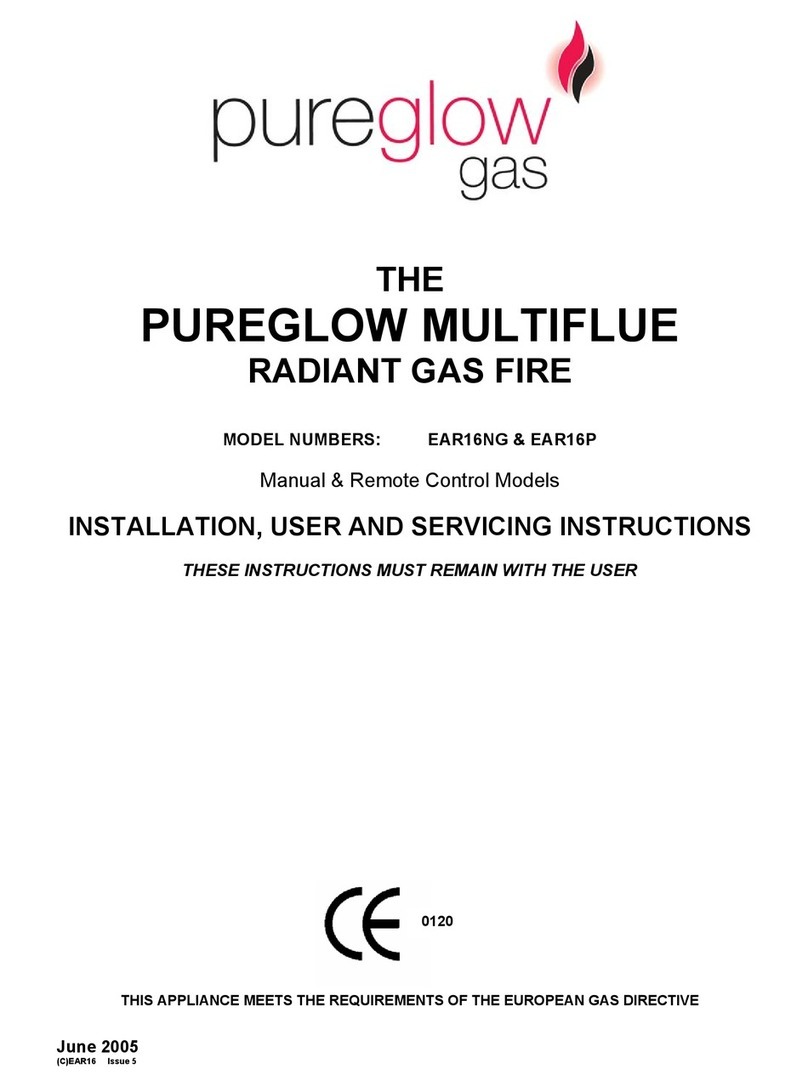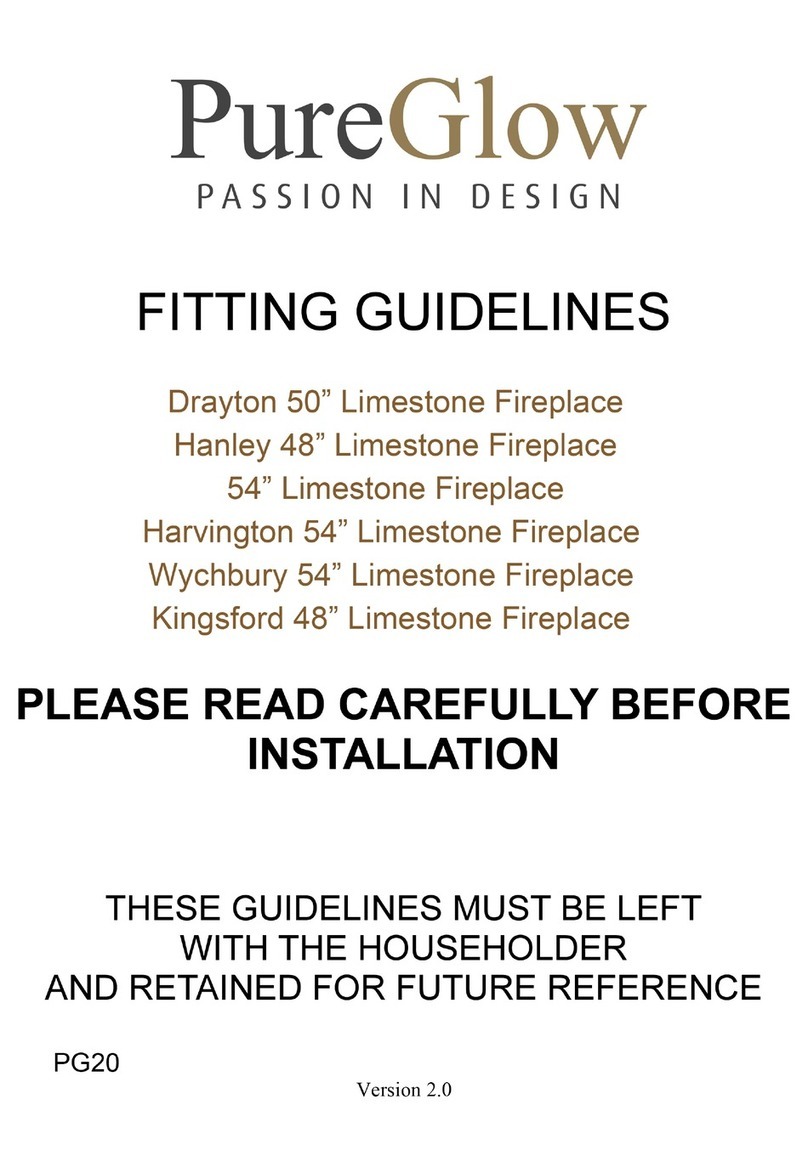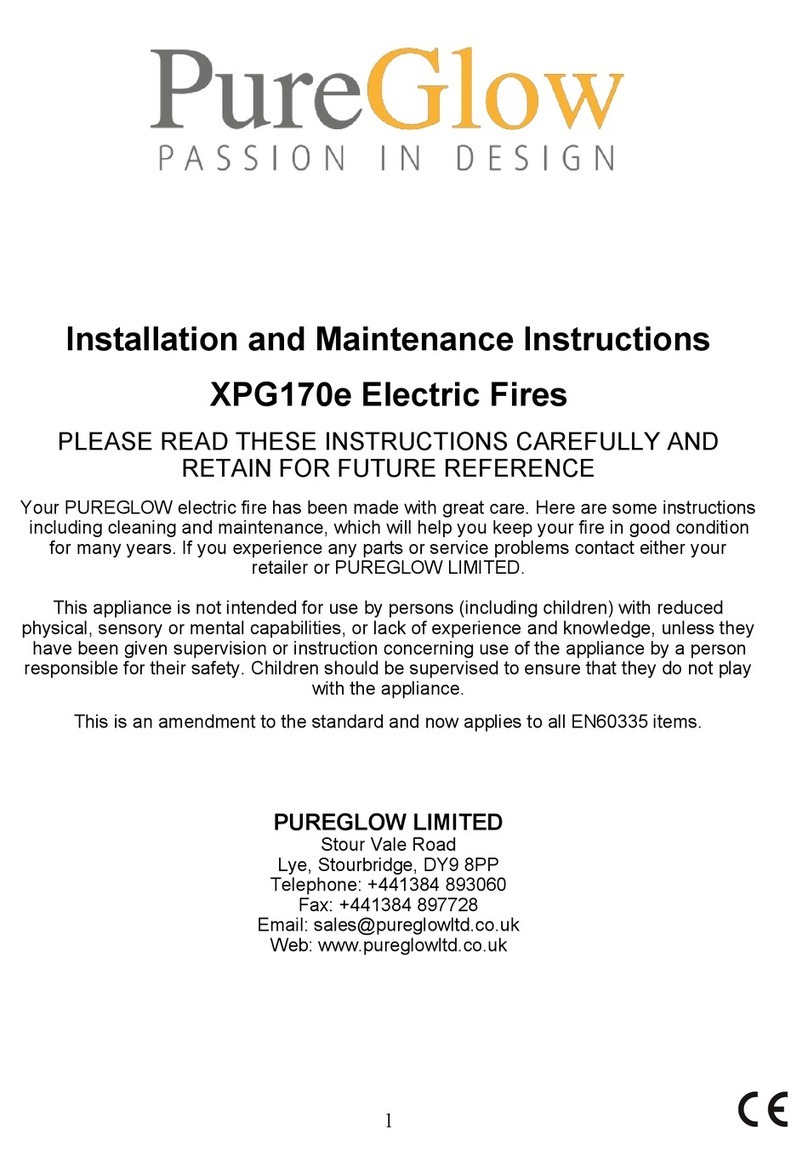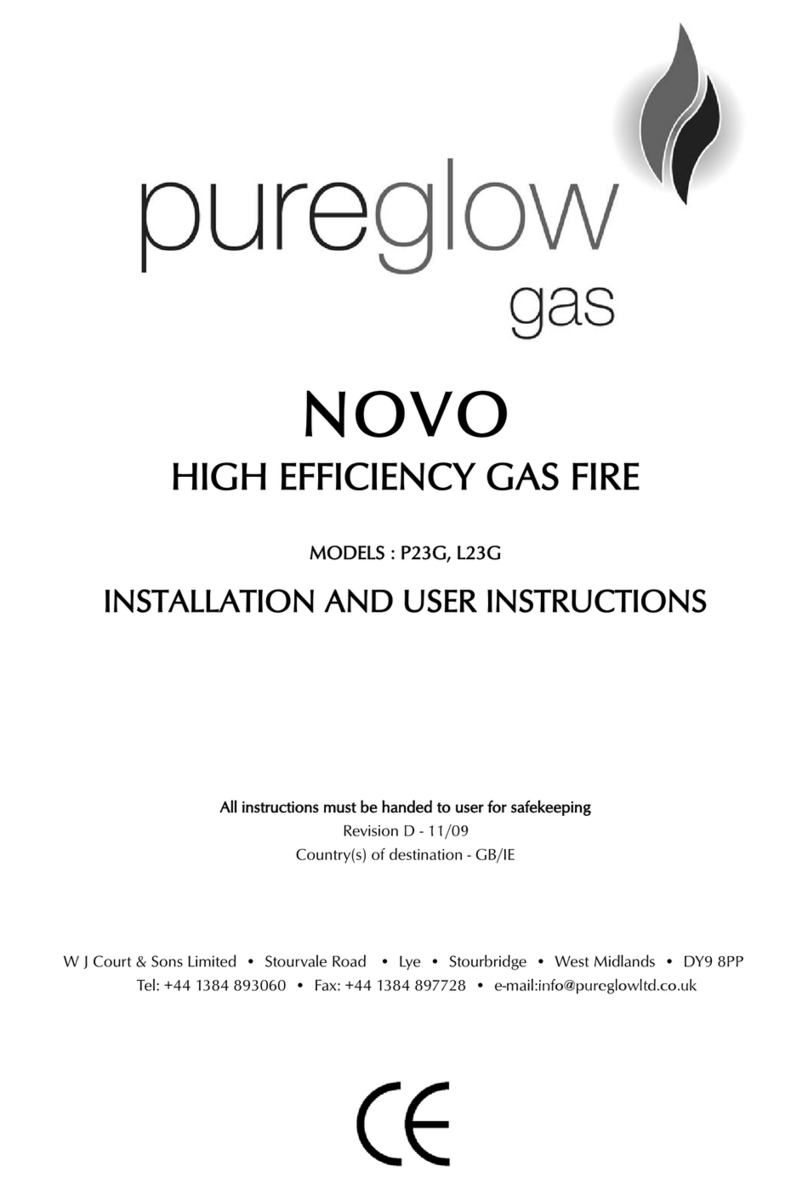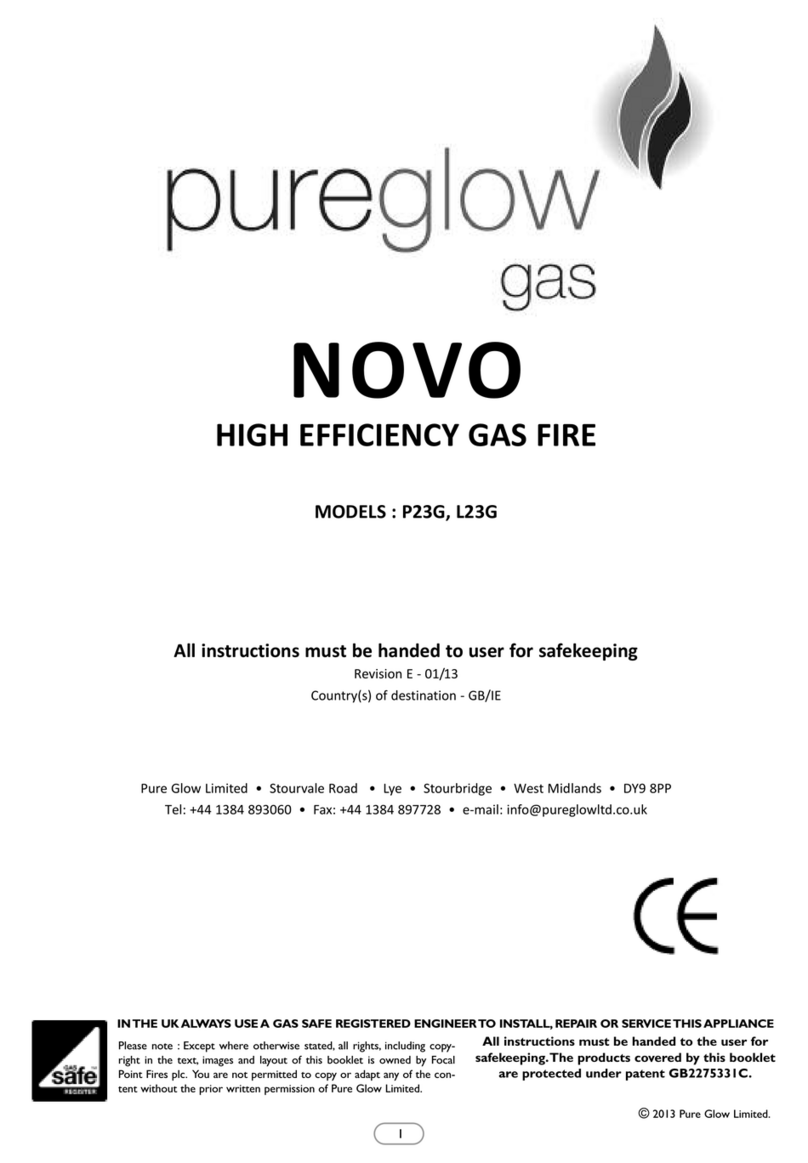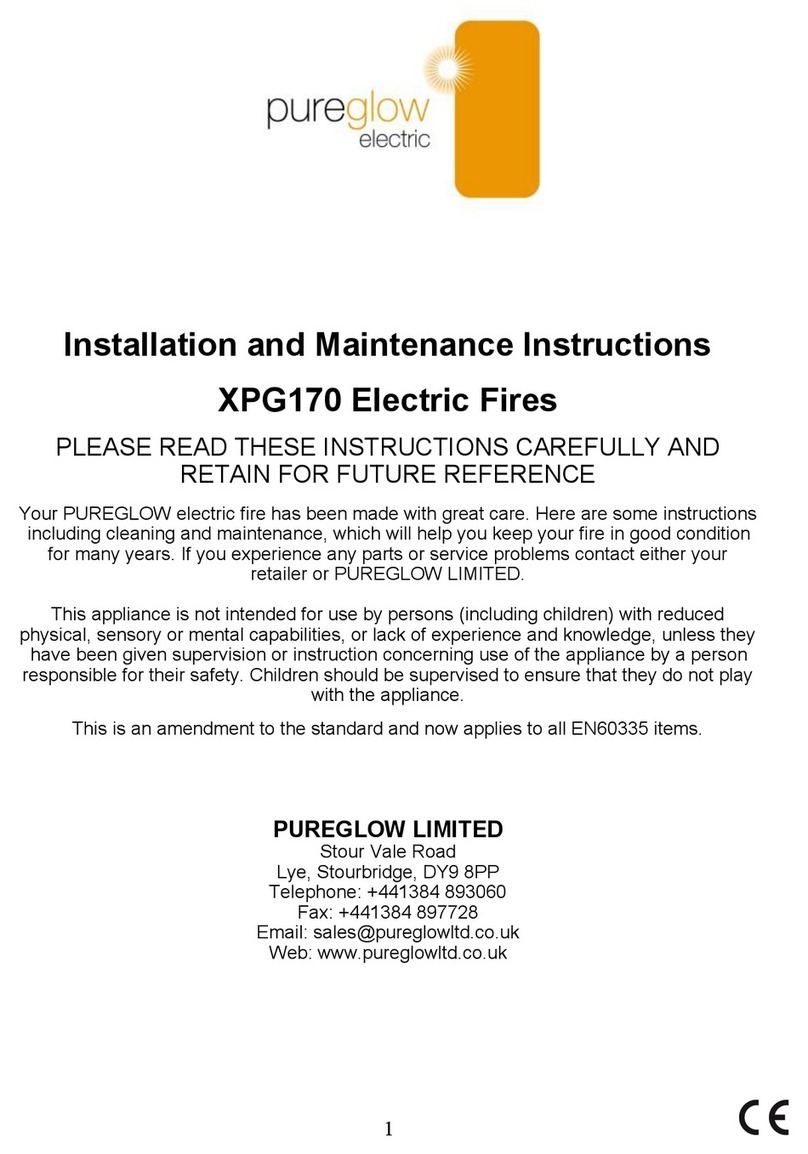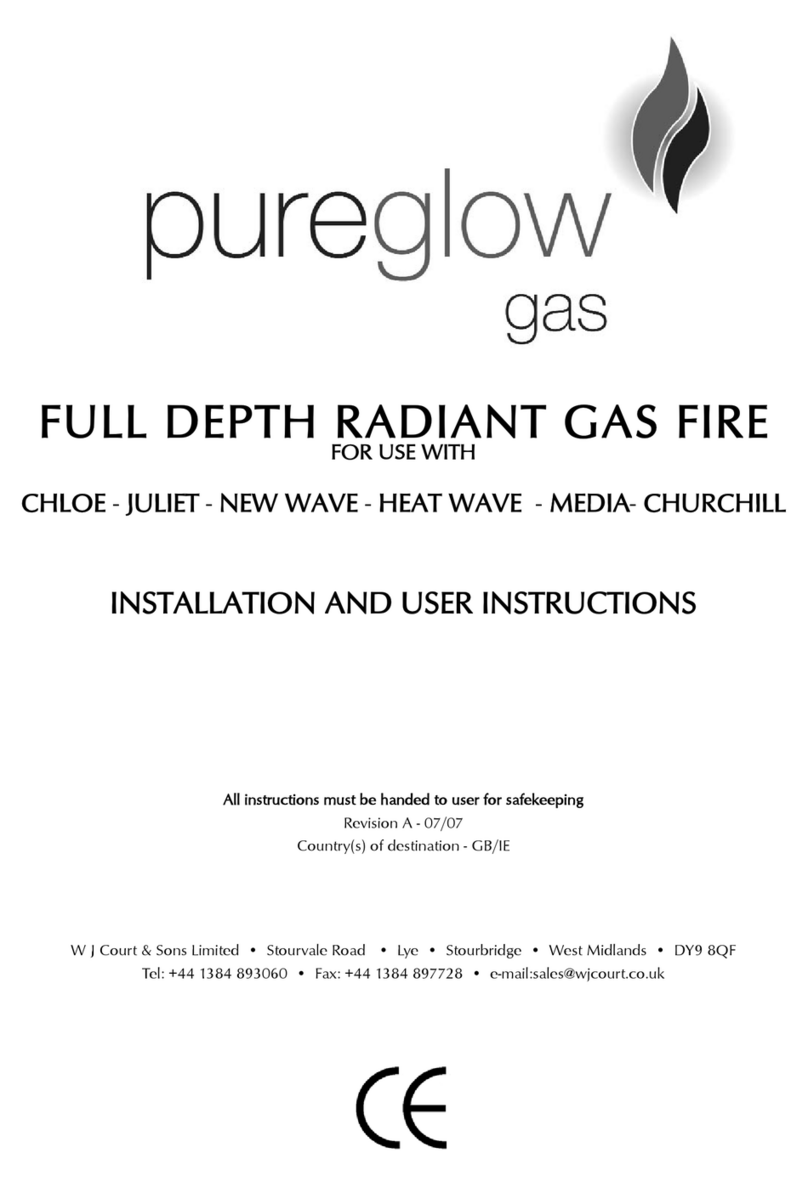DEBRIS COLLECTION SPACE
The mounting depth of this appliance is 108mm.
In accordance with BS 5871 part 2, minimum debris collection volumes are required behind the installed appliance. These are shown in the
table below and as dimension X on the fireplace diagram shown previously.
CLAY/CEMENT LINES OR BLOCK FLUE WHICH IS NEW, UNUSED, OR PREVIOUSLY ONLY USED WITH A GAS FIRE.
X Dimension = 20mm
UNLINED FLUE OR CHIMNEY WHICH HAS BEEN PREVIOUSLY USED FOR A SOLID FUEL OR OIL BURNING APPLIANCE
X Dimension = 60mm
VENTILATION
No purpose provided ventilation is normally required for this appliance
. The requirements of other appliances operating in the same room or
space must be taken into consideration when assessing ventilation.
If spillage is detected when commissioning the appliance, then amongst other problems there may be insufficient natural ventilation for cor-
rect operation of the flue. If the appliance does not spill with the windows open, but spillage is detected with the windows closed, this demon-
strates a lack of natural ventilation. If spillage is still detected with the windows open, the flue is at fault. Installation of an air brick is the best
solution to lack of ventilation. Any ventilation fitted must comply with BS 5871 part 2 and BS 5440 part 2. Vents fitted under or within the
immediate vicinity of the appliance must not be used as adverse effects to the operation of the ODS may occur.
Spillage detected during commissioning is almost always a result of poor flue performance that cannot be corrected by any amount of venti-
lation.
For Republic of Ireland ventilation may be required, see IS 813, ICP3, IS 327, and any other rules in force.
PREFABRICATED FLUE BOXES
This appliance can be fitted into a number of proprietary flue boxes provided that the minimum dimensions given in the diagram below are
complied with.
Constructional Note:
The frame of the fire, any back panel or
other infill panels, and the flue box must be sealed together
so that there is no possibility of leakage between them.
Adequate clearances to combustible materials (e.g. false
chimney breast construction) must be maintained.
The manufacturers’ instructions for fitting the prefabricated
box shall be complied with at all times.
To fit the fire using the cable fixing kit, some minor adaption
may be necessary for certain flue boxes. A check should be
made to ensure the firebox does not obscure the flue box
outlet.
The firebox, base of the flue box, and hearth below may be
drilled to allow plugs and screws to secure installation.
It is important that the sealing requirements of the appliance
are met at all times and that the flue box is well sealed to any
back or infill panel.
Note:
The DEPTH dimension is inclusive of any back or infill
panel.
UNPACKING THE APPLIANCE
Stand the carton the right way up, cut the strapping bands and remove the top endcap. Read
all
the instructions before continuing to unpack
or install this appliance.
Remove the box containing the cast front fret, and the bags containing the coals. Remove the cardboard packing pieces, and any other bags
or boxes containing fittings or other parts. When all loose parts have been removed, the outer sleeve may be lifted off to reveal the appliance.
Check that the components supplied correlate with the component checklist given in section 7.1. Please dispose of all the packaging materi-
als at you local recycling centre.
4
4.1
5.0
125mm min internal
dia twin wall flue
540mm min
opening height
350mm min
opening width
128mm
min depth
6.0
7.0
© 2009 Pure Glow Limited
